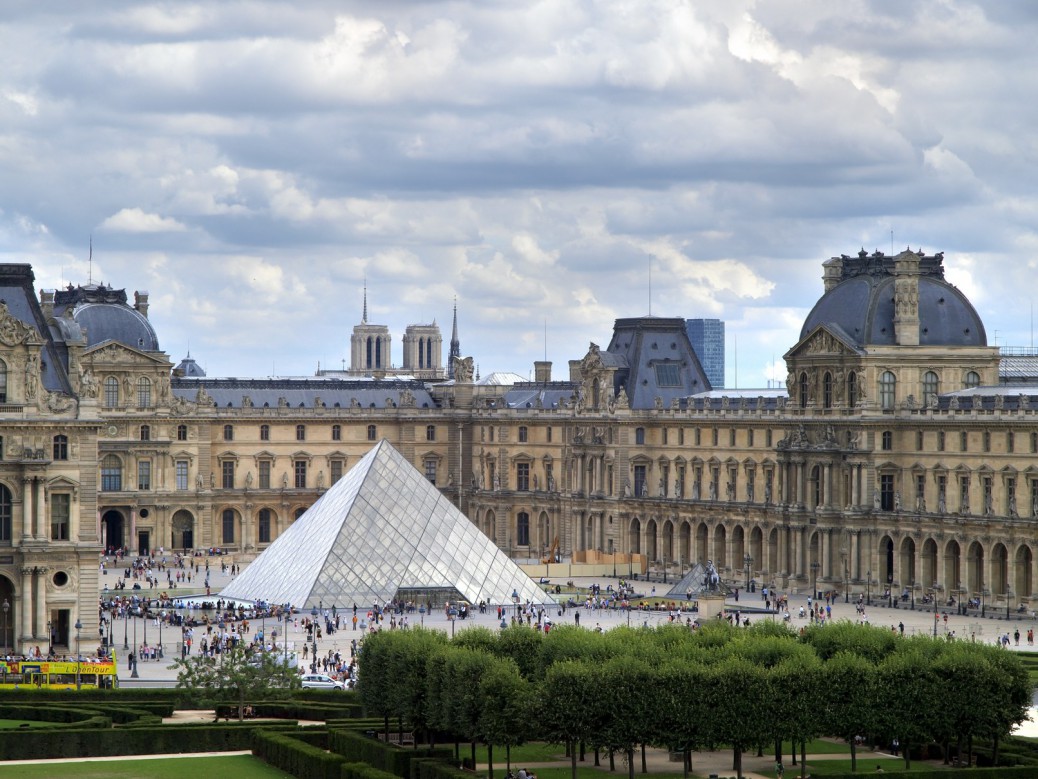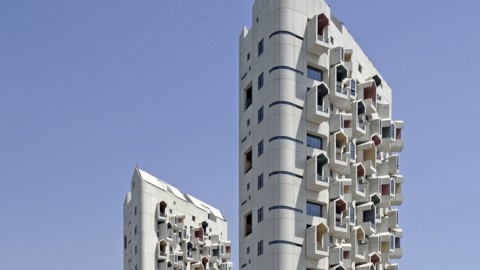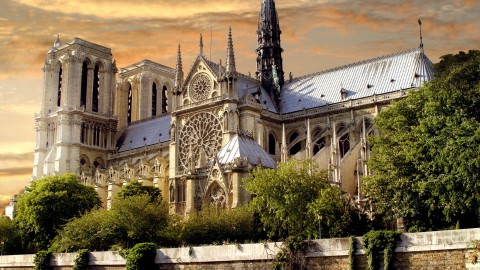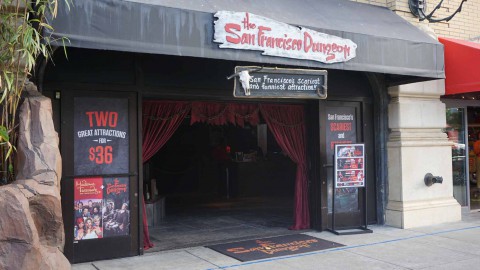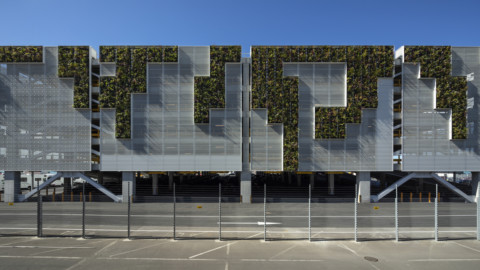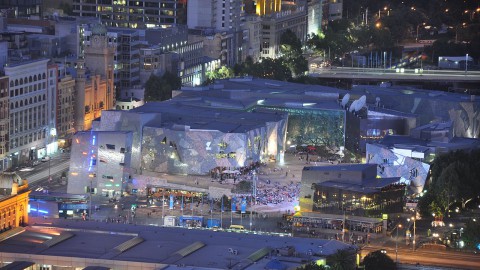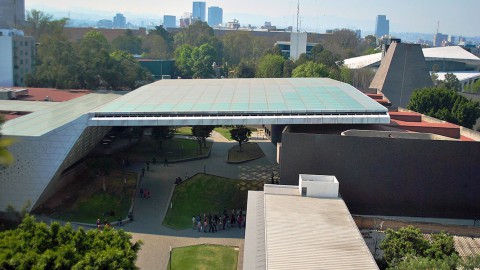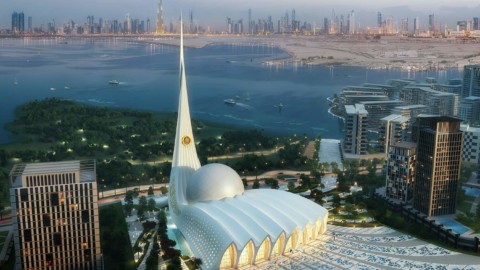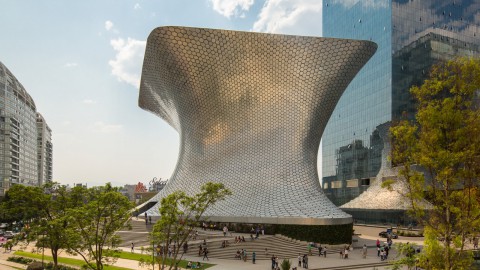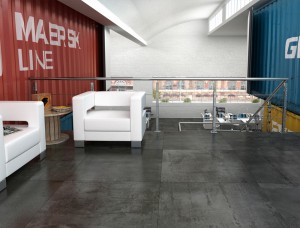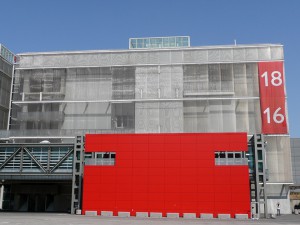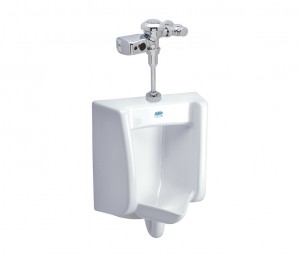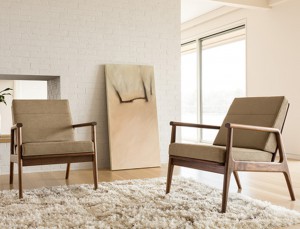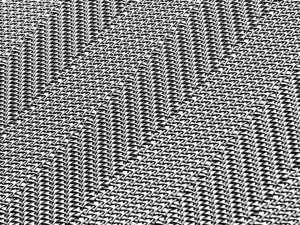Musée du Louvre 羅浮宮
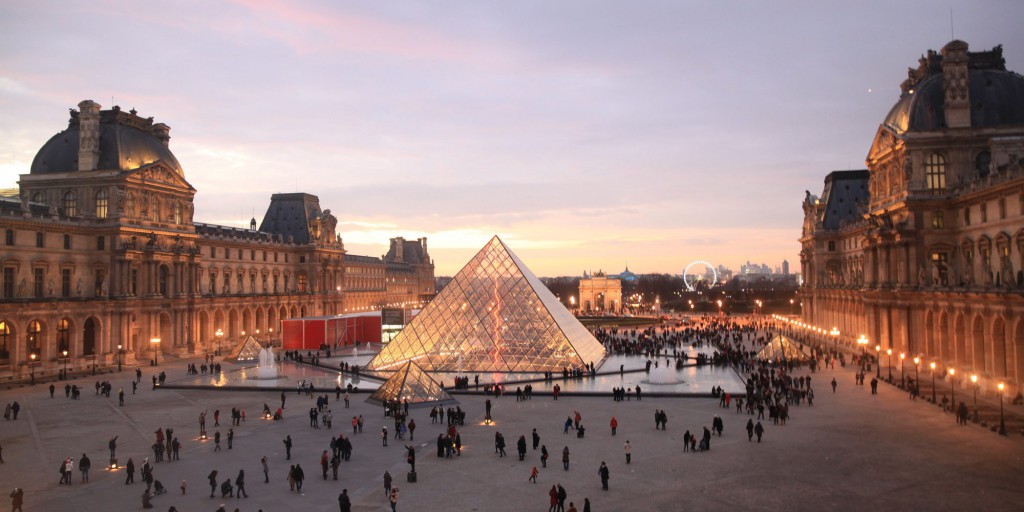
The Louvre Palace (French: Palais du Louvre, IPA: [palɛ dy luvʁ]) is a former royal palace located on the Right Bank of the Seine in Paris, between the Tuileries Gardens and the church of Saint-Germain l’Auxerrois. Originally a fortress built in the medieval period, it became a royal palace in the fourteenth century under Charles V and was used from time to time by the kings of France as their main Paris residence. Its present structure has evolved in stages since the 16th century. In 1793 part of the Louvre became a public museum, now the Musée du Louvre, which has expanded to occupy most of the building.
盧浮宮(法語:Palais du Louvre,IPA:[palɛdyluvʁ])是一座前皇家宮殿,位於巴黎塞納河右岸,位於杜樂麗花園和聖日耳曼盧塞羅伊教堂之間。 它原本是一座建於中世紀時期的堡壘,在查理五世時期成為十四世紀的皇宮,並被法國國王不時用作其主要的巴黎住所。 它的現有結構自16世紀以來逐步發展。 1793年,盧浮宮的一部分成為了一個公共博物館,現在是盧浮宮博物館,它已經擴展到佔據了大部分建築。
General information
Type:Royal residence
Architectural style:Additions of the 13th and 14th centuries: Gothic, Additions of the 16th century: Renaissance, Additions of the 17th and 18th centuries: Louis XIII Style and Baroque, Additions of the 19th century: Neo-Classicism, Neo-Baroque and Napoleon III Style, Additions of the 20th century: Modernism
Location:Rue de Rivoli, 75001 Paris, France
Construction started:1202 (Louvre Castle), 1546 (Louvre Palace)
Completed:1989 (completed by the Louvre Pyramid)
一般信息
類型:皇家住所
建築風格:13世紀和14世紀的增添:哥特式,16世紀的增添:文藝復興,17和18世紀的增添:路易十三風格和巴洛克風格,19世紀的新增:新古典主義,新巴洛克和拿破崙 三,風格,二十世紀的增添:現代主義
地點:Rue de Rivoli,75001巴黎,法國
建設開始:1202年(盧浮宮城堡),1546年(盧浮宮)
完成時間:1989年(由盧浮宮金字塔完成)
The present-day Louvre Palace is a vast complex of wings and pavilions on four main levels which, although it looks to be unified, is the result of many phases of building, modification, destruction and restoration. The Palace is situated in the right-bank of the River Seine between Rue de Rivoli to the north and the Quai François Mitterrand to the south. To the west is the Jardin des Tuileries and, to the east, the Rue de l’Amiral de Coligny, where its most architecturally famous façade, the Louvre Colonnade, and the Place du Louvre are found. The complex occupies about 40 hectares and forms two main quadrilaterals which enclose two large courtyards: the Cour Carrée (Square Courtyard), completed under Napoleon I, and the larger Cour Napoléon (Napoleon Courtyard) with the Cour du Carrousel to its west, built under Napoleon III. The Cour Napoléon and Cour du Carrousel are separated by the street known as the Place du Carrousel.
The Louvre complex may be divided into the “Old Louvre”: the medieval and Renaissance pavilions and wings surrounding the Cour Carrée, as well as the Grande Galerie extending west along the bank of the Seine; and the “New Louvre”: those 19th-century pavilions and wings extending along the north and south sides of the Cour Napoléon along with their extensions to the west (north and south of the Cour du Carrousel) which were originally part of the Palais des Tuileries (Tuileries Palace), burned during the Paris Commune in 1871.
Some 51,615 sq m (555,000 sq ft) in the palace complex are devoted to public exhibition floor space.
現今的盧浮宮是一個巨大的翼樓和四層樓的複合體,儘管它看起來是統一的,但卻是建築,修改,破壞和修復的許多階段的結果。宮殿位於塞納河右岸,北面是Rue de Rivoli街,南面是QuaiFrançoisMitterrand。西邊是杜樂麗花園(Jardin des Tuileries),東邊是阿米拉爾海軍上將(Rue de l’Amiral de Coligny),那裡有最具建築特色的外牆,盧浮宮柱廊和盧浮宮。該建築群佔地約40公頃,形成兩個主要的四邊形,包括兩個大庭院:CourCarrée(廣場庭院),在拿破崙一世完成,以及較大的CourNapoléon(拿破崙庭院),西面是Cour du Carrousel,建於拿破崙三世CourNapoléon和Cour du Carrousel被稱為Place du Carrousel的街道隔開。
盧浮宮建築群可分為“老盧浮宮”:中世紀和文藝復興時期的亭子和CourCarrée周圍的翼樓,以及沿著塞納河岸向西延伸的Grande Galerie;和“新羅浮宮”:19世紀的亭子和翅膀沿著拿破崙的北部和南部延伸,並延伸到西部(Cour du Carrousel的北部和南部),這些部分原本是Palais des的一部分。杜樂麗(杜樂麗宮)於1871年在巴黎公社期間被燒毀。
宮殿建築群約51,615平方米(555,000平方英尺)用於公共展覽場地。
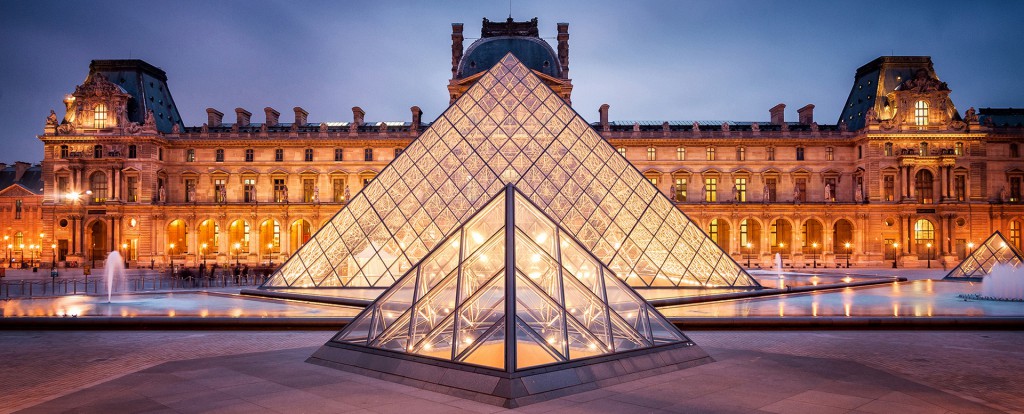
The Old Louvre occupies the site of the Louvre castle, a 12th-century fortress built by King Philip Augustus, also called the Louvre. Its foundations are viewable in the basement level as the “Medieval Louvre” department. This structure was razed in 1546 by King Francis I in favour of a larger royal residence which was added to by almost every subsequent French monarch. King Louis XIV, who resided at the Louvre until his departure for Versailles in 1678, completed the Cour Carrée, which was closed off on the city side by a colonnade. The Old Louvre is a quadrilateral approximately 160 m (520 ft) on a side consisting of 8 ailes (wings) which are articulated by 8 pavillons (pavilions). Starting at the northwest corner and moving clockwise, the pavillons consist of the following: Pavillon de Beauvais, Pavillon de Marengo, Northeast Pavilion, Central Pavilion, Southeast Pavilion, Pavillon des Arts, Pavillon du Roi, and Pavillon Sully (formerly, Pavillon de l’Horloge). Between the Pavillon du Roi and the Pavillon Sully is the Aile Lescot (Lescot Wing): built between 1546 and 1551, it is the oldest part of the visible external elevations and was important in setting the mould for later French architectural classicism. Between the Pavillon Sully and the Pavillon de Beauvais is the Aile Lemercier (Lemercier Wing): built in 1639 by Louis XIII and Cardinal Richelieu, it is a symmetrical extension of Lescot’s wing in the same Renaissance style. With it, the last external vestiges of the medieval Louvre were demolished.
舊盧浮宮佔據了盧浮宮城堡的遺址,這座城堡是由菲利普奧古斯都國王建造的12世紀堡壘,也被稱為盧浮宮。它的基礎可以在地下室看作“中世紀的盧浮宮”部門。 1546年,國王弗朗西斯一世將這個結構夷為平地,為更大的皇家住所提供了支持,幾乎所有後來的法國君主都加入了這個住所。路易十四國王居住在盧浮宮,直到他於1678年離開凡爾賽宮,完成了CourCarrée,該城市被一個柱廊封閉。舊羅浮宮是一個大約160米(520英尺)的四邊形,由8個(翼)組成,由8個亭子(亭台)連接。從西北角開始順時針移動,pavillons包括:Pavillon de Beauvais,Pavillon de Marengo,東北館,中央館,東南館,Pavillon des Arts,Pavillon du Roi和Pavillon Sully(前身為Pavillon de l) “鐘)。在Pavillon du Roi和Pavillon Sully之間是Aile Lescot(Lescot Wing):建於1546年至1551年之間,它是可見外部高程中最古老的部分,對於後來的法國建築古典主義設置模具非常重要。在Pavillon Sully和Pavillon de Beauvais之間是Aile Lemercier(Lemercier翼):由路易十三和紅衣主教Richelieu於1639年建造,它是Lescot翼的對稱延伸,具有相同的文藝復興風格。有了它,中世紀的盧浮宮的最後外部遺跡被拆除。

The New Louvre is the name often given to the wings and pavilions extending the Palace for about 500 m (1,600 ft) westwards on the north (Napoleon I and Napoleon III following the quarter-mile-long Henry IV Seine Riverside Grande Galerie) and on the south (Napoléon III) sides of the Cour Napoléon and Cour du Carrousel. It was Napoléon III who finally connected the north end of the Tuileries Palace with the Louvre in the 1850s, thus finally achieving the Grand Dessein (Great Design) originally envisaged by King Henry IV of France in the 16th century. This consummation only lasted a few years, however, as the Tuileries was burned in 1871 and finally razed in 1883. The northern limb of the new Louvre consists (from east to west) of three great pavilions along the Rue de Rivoli: the Pavillon de la Bibliothèque, Pavillon de Rohan and Pavillon de Marsan. On the inside (court side) of the Pavillon de la Bibliothèque are three pavilions; Pavillon Colbert, Pavillon Richelieu and Pavillon Turgot; these pavilions and their wings define three subsidiary Courts, from east to west: Cour Khorsabad, Cour Puget and Cour Marly.
The southern limb of the New Louvre consists (from east to west) of five great pavilions along the Quai François Mitterrand (and Seine bank): the Pavillon de la Lesdiguieres, Pavillon des Sessions, Pavillon de la Tremoille, Pavillon des États and Pavillon de Flore. As on the north side, three inside (court side) pavilions (Pavillon Daru, Pavillon Denon and Pavillon Mollien) and their wings define three more subsidiary Courts: Cour du Sphinx, Cour Visconti and Cour Lefuel.
The Chinese American architect I.M. Pei was selected in 1983 to design François Mitterrand’s Grand Louvre Project (1981–2002). A vast underground complex of offices, shops, exhibition spaces, storage areas, and parking areas, as well as an auditorium, a tourist bus depot, and a cafeteria, was constructed underneath the Louvre’s central courtyards of the Cour Napoléon and the Cour du Carrousel. The ground-level entrance to this complex was situated in the centre of the Cour Napoléon and is crowned by the prominent steel-and-glass pyramid (1989), the most famous element designed by Pei.
In a proposal by Kenneth Carbone, the nomenclature of the wings of the Louvre was simplified in 1987 to reflect the Grand Louvre’s organization. Corresponding to the three pavilions through which the public must pass to reach the museum from the main reception area under the glass pyramid, the north part of the complex is now referred to as the Richelieu wing; the east, as the Sully wing; and the south, as the Denon wing. This allows the casual visitor to avoid (to some extent) becoming totally mystified at the bewildering array of named wings and pavilions.
新羅浮宮的名字經常被賦予到北面向西延伸約500米(1,600英尺)的宮殿和亭子(拿破崙一世和拿破崙三世繼四分之一英里長的亨利四世塞納河畔格蘭德畫廊之後)。 CourNapoléon和Cour du Carrousel的南部(NapoléonIII)兩側。拿破崙三世最終在18世紀50年代將杜樂麗宮的北端與盧浮宮連接起來,最終實現了16世紀法國國王亨利四世最初設想的Grand Dessein(偉大設計)。然而,這種圓滿完成只持續了幾年,因為杜伊勒里宮於1871年被燒毀,最終在1883年被夷為平地。新羅浮宮的北翼由里沃利街的三個大型展館組成(從東到西):Pavillon de laBibliothèque,Pavillon de Rohan和Pavillon de Marsan。 Pavillon delaBibliothèque的內側(庭院一側)有三個亭子; Pavillon Colbert,Pavillon Richelieu和Pavillon Turgot;這些亭子和它們的翅膀定義了三個附屬法院,從東到西:Cour Khorsabad,Cour Puget和Cour Marly。
新盧浮宮的南部邊緣(從東到西)由QuaiFrançoisMitterrand(和塞納河岸)沿著五個大型展館組成:Pavillon de la Lesdiguieres,Pavillon des Sessions,Pavillon de la Tremoille,PavillondesÉtats和Pavillon de花神。在北側,三個內側(宮廷側)亭子(Pavillon Daru,Pavillon Denon和Pavillon Mollien)和他們的翅膀定義了三個附屬法院:Cour du Sphinx,Cour Visconti和Cour Lefuel。
1983年,華裔美國建築師I.M. Pei被選中設計FrançoisMitterrand的大盧浮宮項目(1981-2002)。在盧浮宮的CourNapoléon和Cour du Carrousel的中央庭院下面建造了一個巨大的地下綜合體,包括辦公室,商店,展覽空間,存儲區和停車場,以及禮堂,旅遊巴士站和自助餐廳。 。這座建築群的地面入口位於CourNapoléon的中心,由著名的鋼鐵玻璃金字塔(1989年)加冕,這是裴設計的最著名的元素。
在Kenneth Carbone的一項提案中,盧浮宮的命名法在1987年被簡化,以反映盧浮宮的大組織。對應於公眾必須從玻璃金字塔下的主接待區到達博物館的三個展館,該綜合體的北部現在被稱為黎塞留翼;東邊,像薩利翼;和南方一樣,是天龍翼。這使得隨意的訪客可以避免(在某種程度上)在令人眼花繚亂的命名翅膀和亭子中變得完全神秘。
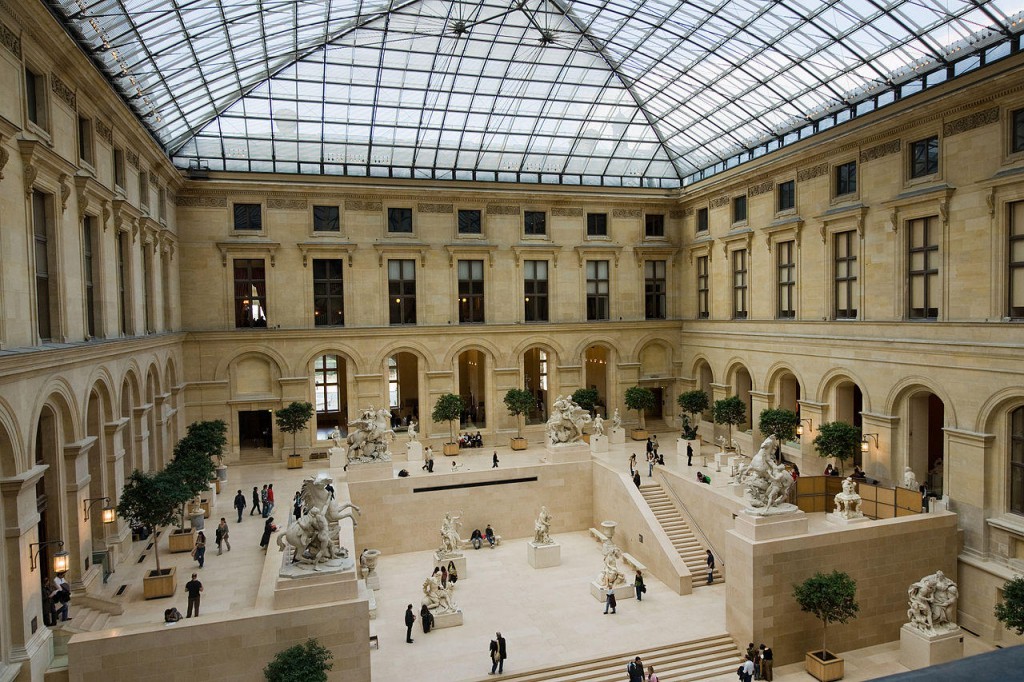
FROM:https://en.wikipedia.org/wiki/Louvre_Palace
FROM:Musée du Louvre (Paris) – A Virtual Tour through the Louvre Museum in Paris, France
FROM:Le Louvre
FROM:Welcome to the Louvre – Bienvenue au Louvre – Musée du Louvre
Don’t you think it’s addictive?
Want to know more about the beauty of architecture?
Come and join our members to explore the beauty of architectural design.
覺得看得不過癮嗎?
想要知道更多建築之美嗎?
快來加入我們的會員,一同探索建築設計之美。
The above article is purely for appreciation and sharing purposes, as well as the construction of new technology and the public can be in-depth understanding of the information at the same time there are sources, will be able to query, no use of the document as a commercial transaction, if illegal, please inform the We will immediately remove the site, thank you for cooperation.
以上文章純粹作為欣賞及分享用途,以及將建築新型技術傳遞給與大眾能夠深入了解,同時資料還有來源,將可查詢,絕無使用該文件資料作為商業交易行為,如有違法請務必告知該網站我們將立即處理撤除,謝謝合作。

